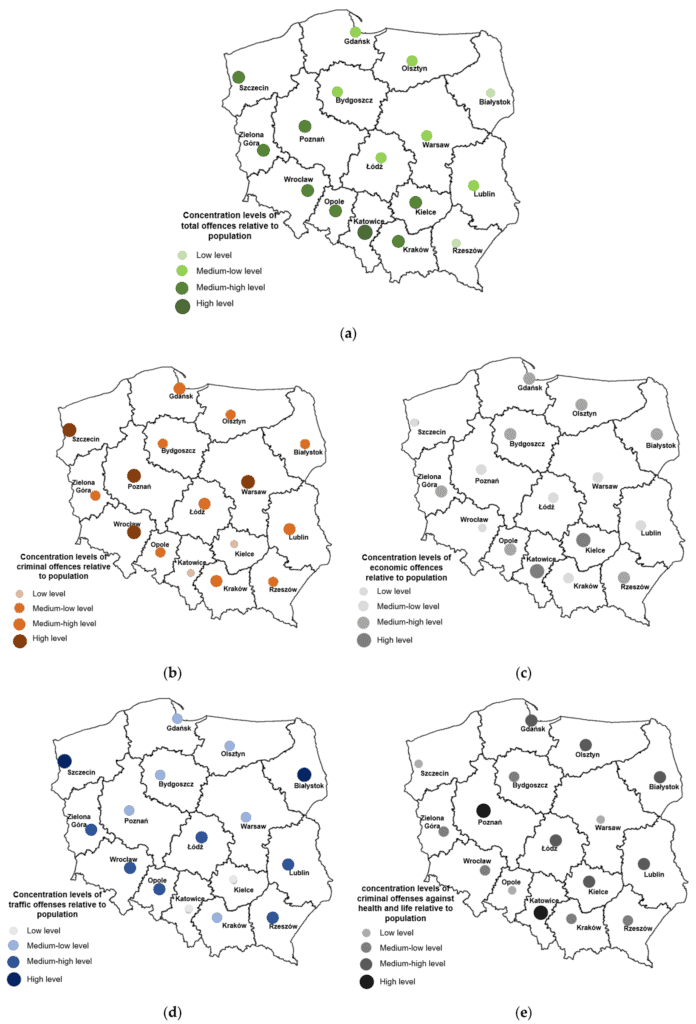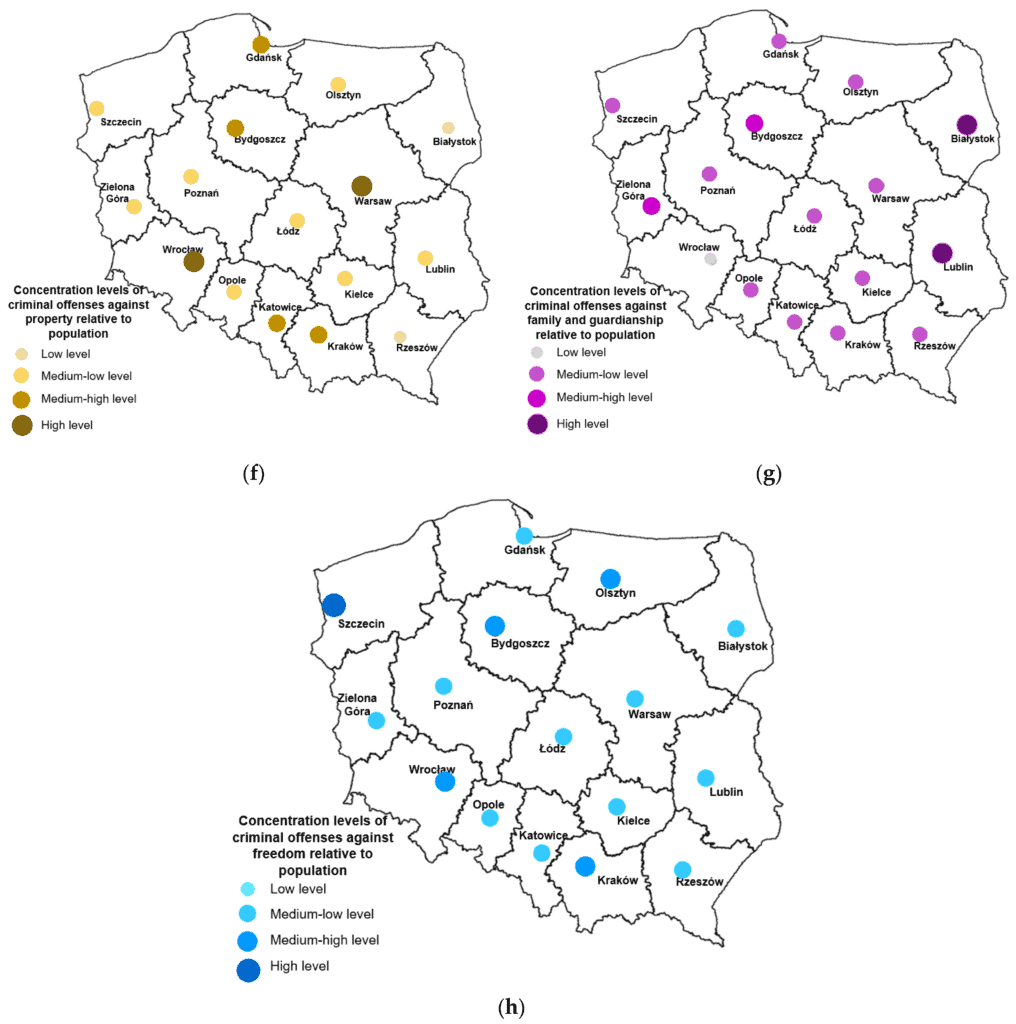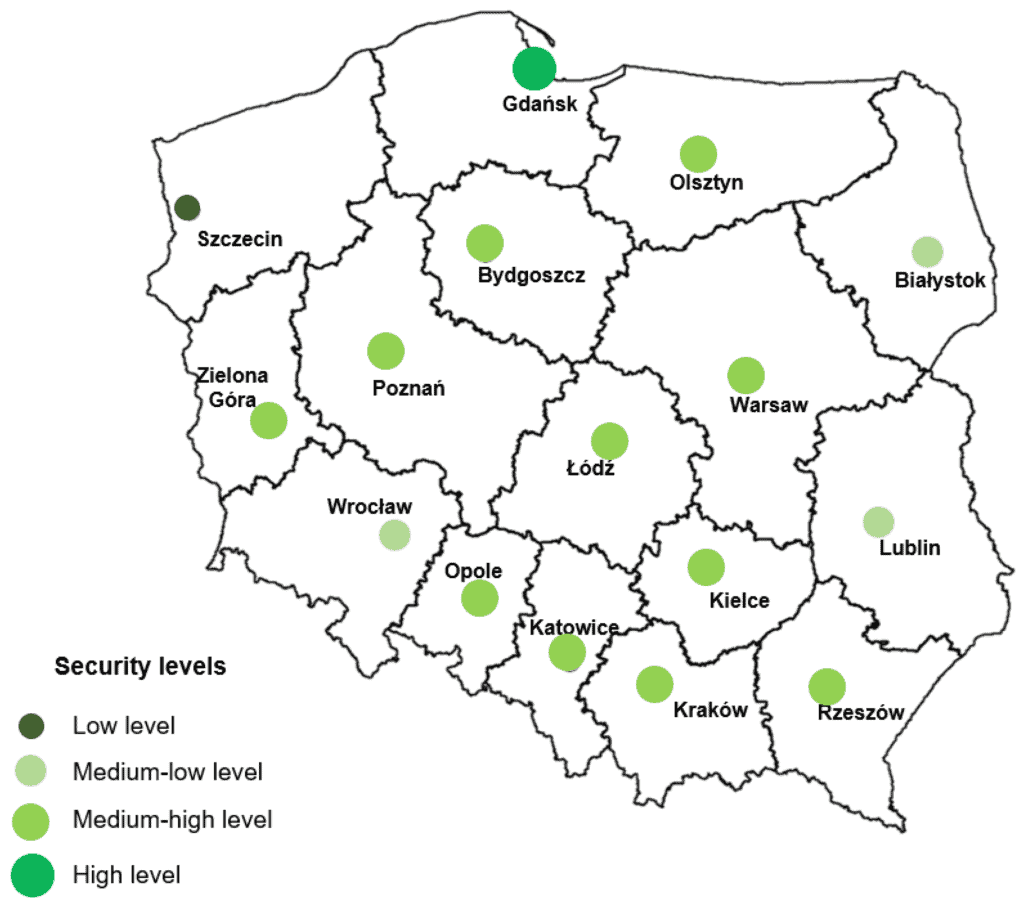This paper, written by Magdalena Tutak and Jarosław Brodny, was published in Smart Cities in November 2023.[1] It investigates the link between smart city concepts and public safety, focusing on crime and safety in 16 Polish provincial cities from 2013 to 2022. The study’s central thesis is that the smart city concept, which heavily relies on advanced information and communication technologies, is not just about improving living conditions and economic activity but also significantly involves enhancing urban security.
In the context of rapid urbanization and the growing emphasis on smart cities, this research is highly relevant. It underscores the need for a holistic approach to urban development, where technological advancements are balanced with human-centric priorities like safety and security. The study’s methodology and findings can be instrumental for policymakers and urban planners in shaping future smart city initiatives, ensuring they cater comprehensively to the multifaceted needs of urban populations. The research also aligns with global trends towards safer, more sustainable urban environments, a key focus of urban development agendas worldwide.
Smart Cities and Public Safety
The paper discusses the evolution of the smart city concept, originally centered on technological advancements, towards a more human-centric approach. This shift includes addressing broader urban life conditions and increased public participation. Significantly, it highlights that safety is a crucial dimension of the smart city framework, impacting overall living conditions in urban areas. The study positions cities like Warsaw, Kraków, and Wrocław, which are recognized as smart cities,[2] alongside others aspiring to this status, to assess their safety standards based on crime and safety indicators.
It also underlines the increasing urbanization worldwide, with more than 56% of the global population residing in cities, projected to rise to over 66% by 2050.[3] In this context, the study emphasizes the importance of security as a fundamental human need and a critical aspect of urban living, directly influencing the quality of life, local economy, and social interactions.
Research Objective and Methodology
The research aimed to evaluate safety in these cities using indicators related to criminal and economic offenses. The methodology involved analyzing the dynamics of crime changes and their concentration relative to the city populations using the TOPSIS method. This approach help us achieve a comprehensive analysis of urban safety, considering various offense types and their impact on the population. The study’s rationale is grounded in the increasing importance of urban safety in the context of smart cities and sustainable urban development.
Analysis of Crime and Safety
The results indicate a significant decrease in overall crime rates across the studied cities, with a nearly 22% reduction from 2013 to 2022. However, the trend shows fluctuations, with increases in total registered offenses, particularly economic offenses, during certain periods. The largest decrease in total crime was observed in Poznań, while Warsaw and Katowice saw slight increases. Notably, all cities reported a decrease in criminal nature offenses, with the most significant reduction in Poznań and the least in Gdańsk.


Nevertheless, the analysis revealed Gdańsk as the city with the highest safety index, scoring 0.71. This score reflects its low concentration of severe crimes relative to its population, enhancing its reputation as a liveable and tourist-friendly city. Bydgoszcz and Olsztyn followed closely, ranking second and third respectively, and sharing similar characteristics in terms of crime rates and resident safety perceptions.
Conversely, Szczecin recorded the lowest safety index at 0.46. During the study period, Szczecin experienced a notably high rate of economic crimes and criminal offenses against personal freedoms.

Gdańsk: A Model of Urban Safety
Gdańsk, a provincial city known for its cultural and academic significance, as well as being a popular tourist destination, demonstrated a high level of safety. This is significant given its substantial annual tourist influx. The majority of surveyed cities, including Bydgoszcz, Olsztyn, Zielona Góra, Poznań, Łódź, Rzeszów, Warsaw, Kielce, Kraków, and Katowice, showcased medium to high safety levels. This is encouraging for both residents and visitors. Cities like Lublin, Opole, Wrocław, and Bialystok fell into the medium-low safety category, with Szczecin being the only city categorized as having low safety.
The geographical analysis of the safety levels indicates that cities in southern Poland and the central-western region are generally safer. Notable exceptions were Szczecin and Wroclaw. In contrast, eastern cities showed lower safety levels compared to their southern counterparts.
The Role of Development and Smart Solutions in Urban Safety
The study suggests a correlation between high safety levels and city development. Cities with high and medium-high safety levels are often wealthier, with high GDPs, and are actively implementing modern management and safety solutions. These include effective monitoring and incident notification systems, along with advanced communication systems enhancing intervention efforts. The positive impact of smart solutions on urban safety is evident in these cities. Moreover, the strategies employed in the safer cities could serve as models for those with lower safety scores, potentially improving their overall safety.
Recent trends in urban safety highlight the increasing role of technology and smart city solutions in enhancing public security.[4] Smart surveillance systems, efficient emergency response mechanisms,[5] and community communication[6] through digital platforms are becoming key elements in creating safer urban environments. This approach not only addresses immediate safety concerns but also fosters a sense of community and collective responsibility among residents, further contributing to the overall safety and well-being of the city.
Implications
The paper concludes that the varied safety levels among these cities demonstrate the effectiveness of comparative research in implementing smart city concepts. This research could guide strategies and policies to enhance urban safety, especially in cities aspiring to become smart cities. The study’s findings enrich the understanding of social aspects of urban life in Poland, contributing to the broader discourse on smart urban development and citizen safety.
The research methodology presented in the paper is robust, utilizing a set of indicators to assess and compare safety levels in the studied cities. The authors’ use of crime concentration indices and safety indices provides a clear framework for evaluating the data. The findings reveal a wide variation in safety levels among the cities, with Gdańsk, Bydgoszcz, Olsztyn, and Zielona Góra identified as the safest cities and Szczecin as the least safe. These rankings provide valuable insights for city managers and policymakers, enabling them to make informed decisions about safety strategies and improvements.
The paper also discusses the implications of safety in the context of smart cities, acknowledging that technology alone is insufficient in ensuring safety. It highlights the importance of well-planned urban spaces and the need to consider the impact of technology on different types of crimes. Additionally, the mention of citizens’ right to privacy in the age of advanced monitoring systems and the call for precise legal regulations reflect the authors’ awareness of the ethical and legal dimensions of smart city technologies.
Furthermore, the paper offers valuable recommendations for enhancing safety in Polish cities aspiring to become smart cities. Suggestions such as developing monitoring systems, providing residents with access to a National Security Threat Map, and implementing strategic programs based on regional community activity are practical steps toward improving safety. The call for education and promotion of appropriate citizen behaviour aligns with the growing trend of citizen participation in smart city initiatives.
References
-
Tutak, M, and Jarosław B. 2023. “A Smart City Is a Safe City: Analysis and Evaluation of the State of Crime and Safety in Polish Cities” Smart Cities 6, no. 6: 3359-3392. https://doi.org/10.3390/smartcities6060149 ↑
-
IMD. Smart City Index. 2023. Available online: https://imd.cld.bz/IMD-Smart-City-Index-Report-20231/10/ ↑
-
United Nations. World Population Prospects: 2017 Revision; Department of Economic and Social Affairs: New York, NY, USA, 2022; Available online: https://population.un.org/wpp/ ↑
-
Li, D., Shang, X., Huang, G. et al. “Can Smart City Construction Enhance Citizens’ Perception of Safety? A Case Study of Nanjing, China.” Soc Indic Res (2024). https://doi.org/10.1007/s11205-023-03304-5 ↑
-
Berkel, A.R.R., Singh, P.M., van Sinderen, M.J. (2018). “An Information Security Architecture for Smart Cities.” In: Shishkov, B. (eds) “Business Modeling and Software Design.” BMSD 2018. Lecture Notes in Business Information Processing, vol 319. Springer, Cham. https://doi.org/10.1007/978-3-319-94214-8_11 ↑
-
Luo, Z. and Yang, B. (2021). “Towards resilient and smart urban road networks: Connectivity restoration via community structure.” Sustainable Cities and Society. https://doi.org/10.1016/j.scs.2021.103344 ↑




